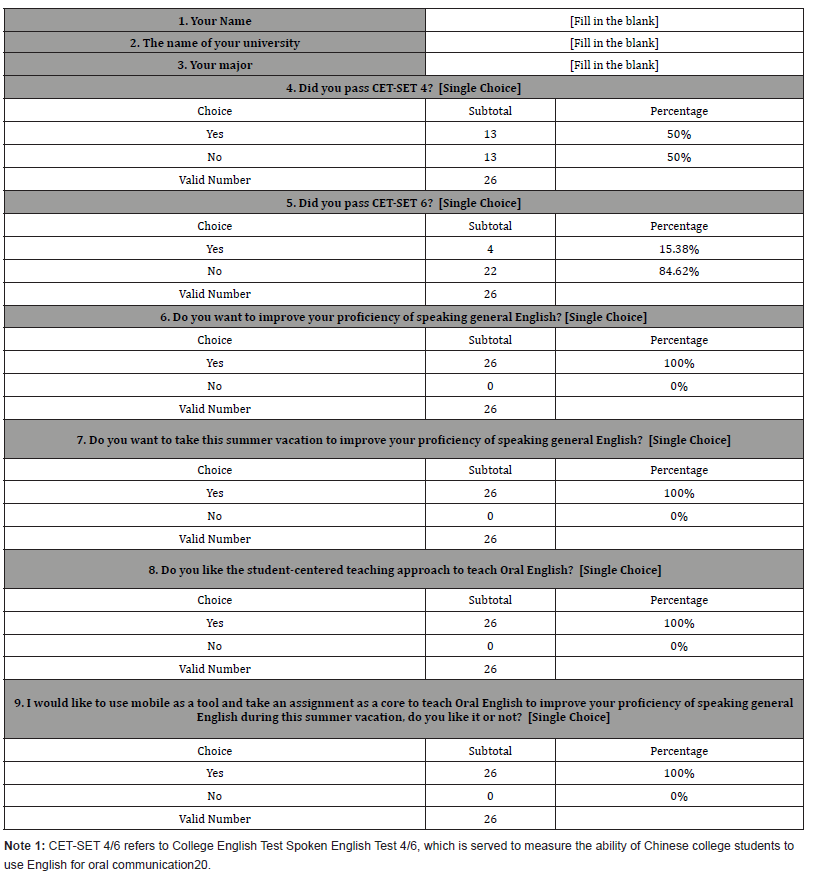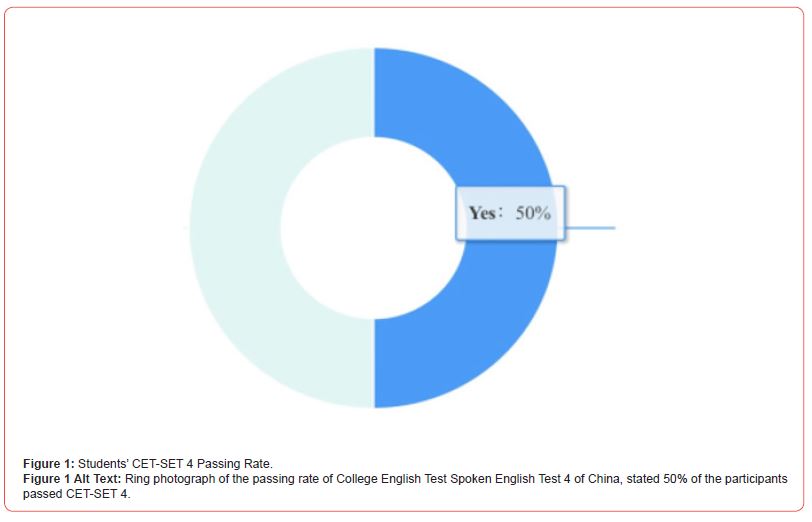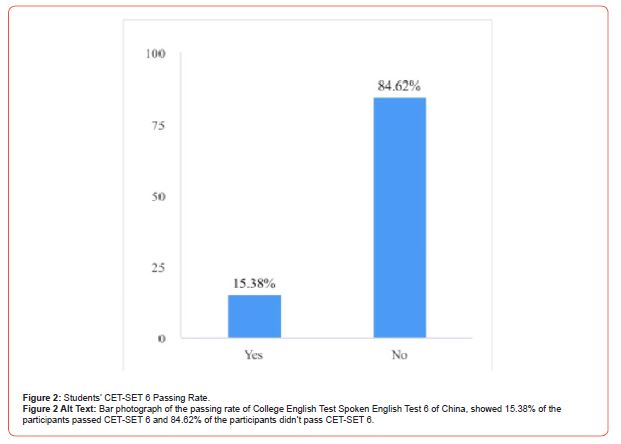 Research Article
Research Article
Improving Productivity of Teaching Spoken English for Hospitality Management Major from AMBTM Perspective
Xiangchong Pan and Qinghui Wang*
College of Business Foreign Languages, Shanghai Business School, Shanghai, China
Qinghui Wang, College of Business Foreign Languages, Shanghai Business School, Shanghai, China.
Received Date: June 06, 2023; Published Date: June 15, 2023
Summary
It does matter to improve productivity of teaching Spoken English for Hospitality Management (SEHM) major to make students’ oral English proficiency meet their future employers’ requirements. But there are challenges in teaching SEHM in China now. Limited teaching hours and materials, obsolete teaching methods, and students’ poor general- English-speaking skills set obstacles for teachers to teach SEHM course in China. Besides, the students’ defective Spoken English skills hampered their career development [1]. To remove those obstacles and improve productivity of teaching SEHM, based on the learning theory of Constructivism, the author, taking assignments as core and mobile as a teaching tool, built Assignment & Mobile -based Teaching Model (AMBTM), to voluntarily teach the credit-tuition-fee-free-Oral-English for SBS (Shanghai Business School) students majoring in Hospitality Management (HM) in summer vacation, 2022. Taking a case study on this course, this paper illustrated how to build AMBTM teaching model, how to source AMBTM teaching materials, how to use this model to instruct students and assess students’ assignments. In addition, the paper, based on quantitative and qualitative analysis, tested the effectiveness of employing the model in teaching this summer course. The testing results proved the model not only improved productivity of teaching SEHM, but offered an optional way to help the poor students who cannot afford computers and internet to join in the online class as their peers do. Furthermore, the model can be duplicated and promoted to improve teaching efficiency and contribute to educational equality in other countries.
Keywords:Assignment & Mobile-based- Teaching-Model; Teaching productivity; Spoken english; Hospitality management; Student-centered learning; Educational equality
Introduction
Since reform and opening up, China has been making its door open wider to greet people from the world. In China, no matter whether business activities or leisure activities, they are no longer confined to Chinese, instead, they welcome global citizens to join in, for instance, China International Import Expo, ATP (Association of Tennis Professionals) World Tour Masters 1000 (Shanghai), Shanghai International Film Festival, and so on, which attract a large number of foreigners to visit China every year. Especially in the post-epidemic era, China continuously opens its arms to embrace foreigners to come in, as Li Qiang, the newly elected Premier of the State Council of the People’s Republic of China, said at the Opening Plenary of the Boao Forum for Asia Annual Conference 2023: China will adhere to reform and opening regardless of the changing world 23. Li’s speech indicates that China is committed to the higher degree of openness, which calls for more people from the world to visit China, thus demanding more internationalized hospitality business to cater for them. In other words, the hospitality industry is booming again, which needs more employers and employees who offer services for guests from differing parts of the world. Because English is universally used, it is essential for hospitality staff to speak English correctly, politely, and fluently to offer quality services for guests. It is the course, Spoken English for Hospitality Management (SEHM) major that not only teaches students majoring in Hospitality Management (HM) how to speak English correctly, politely, but also raises their cross-cultural awareness. When they graduate from universities or colleges, they will become the major work force for hospitality industry in China. To sum up, for HM students, the SEHM course plays an important role in career development. If they can communicate with their guests in English as easy as like fish swim in water, they will get more opportunities to be promoted. But there are many challenges in teaching SEHM in China. The limited teaching hours and materials, large class, the obsolete teaching methods, and students’ poor general English-speaking skills set the obstacles for teachers to teach SEHM in China. Moreover, the students’ defective Spoken English skills hampered teaching hours [1]. To remove those obstacles and improve productivity of teaching SEHM as well as accelerate students’ career promotion, based on the learning theory of Constructivism [2,3], the author, taking assignments as core and mobile as a teaching tool, built the AMBTM teaching model, the Assignment & Mobile-based- Teaching- Model, to voluntarily teach Oral English for 26 HM students from Shanghai Business School (SBS) in summer vacation, 2022. That is, this summer course, based on the assignments and a mobile APP (WeChat) which is a popular, free and multifunctional mobile APP in China, was credit-free, and tuition and fees-free. Taking assignments as core, this course focused on improving students’ spoken English ability, making best use of students’ independent learning with the help of teachers’ instructions and the advantages of mobile Apps teaching, such as, accessibility, flexibility, and affordability. This paper, taking the 2022 summer course as a case study, illustrated how to build AMBTM, how to source AMBTM teaching materials, how to use this model to instruct students, how to use this model to assess students’ assignments, and how to put the model in practice. On the other hand, the paper, based on quantitative and qualitative analysis, tested the effectiveness of employing the model in teaching the 26 HM students in summer, 2022. The testing results proved this novel teaching model not only improved productivity of teaching SEHM, but offered an optional way to help the poor students who can’t afford computers or internet to join in the online class as their peers do.
Numerous research concerning improving teaching efficiency has been done. Cross [4] proved using teacher’s perception of the affordances of language as a tool to improve teaching productivity in a CLIL (content and language integrated learning) classroom. Robert Marzano’s model suggested eight strategies to make teaching effective, including setting goals, providing feedback, helping students interact with new knowledge, and so on 24. Fazel [5] proposed implementing Teacher-coach-student Coaching Model in teaching adults to improve teaching effectiveness. On the other hand, tremendous literature has made contributions to online teaching. Some offered solutions to the side-effects brought by Covid-19 and its variants, shifting physical class to virtual one with the help of diverse teaching software and APPs [6-10]. Some pointed out the disadvantage of adopting online teaching to response to epidemic impacts, that is, students didn’t attend online courses due to lacking internet or computer [11,12]. Some suggested using mobile phone and mobile APPs as supplementary educational tools to teach in the traditional classroom [13-15].
In the post-era of epidemic, online teaching is still a useful supplement to offline teaching. However, how to combine the merits of online teaching with assignments to improve teaching efficiency in the post-era of epidemic is a meaningful question. The AMBTM teaching model made by the author is a way to explore an answer to this question. Based on assignments, this model takes mobile App as a knowledge carrier to teach a course. As to how to link mobile App with assignments to solve the long-standing problems in teaching SEHM in China to improve teaching productivity, few have been done so far.
Methods and Materials
Methods
Based on the learning theory of Constructivism: the students take a positive role in acquiring knowledge [3], the use of studentcentered strategies [16], as well as the principle of Layered Curriculum21, the author built the AMBTM teaching model in order to propose suggestions to response to the current challenges in SEHM course in China and improve the teaching productivity of the SEHM course. The SEHM course would be taught in the fall semester in 2022. Twenty-six students, who major in HM and would be the third year of SBS in Fall, 2022, enrolled in this course at the end of the Spring semester in 2022. In summer, 2022, the author, based on the AMBTM teaching model, voluntarily took the summer vacation to open 2022 summer course to improve the students’ proficiency of speaking general English to meet their future employers’ requirements, and make the summer course available to each student. Please note that the students would neither earn credit from this course nor pay tuition and fees for this course. Why did the author do so? The reasons were as follows: First, the author knew the students’ speaking- general -English proficiency didn’t reach the level required by the SEHM course in terms of the author’s teaching experience because the SEHM course is built upon students’ speaking-general-English abilities, having its eyes on putting in the terms, phrases and expressions, and sentence patterns of hotel business as well as developing conversational skills through practicing the situational role-play ( such as, reception, food beverage, housekeeping, and so on) and studying cross-culture cases, it assumes that students can express their opinions on general topics as they wish, unfortunately, the fact is that most students majoring in HM can’t reach that assumption. To the author’s knowledge, when asking for students to perform the situational role-plays or deliver their opinions on hotel business, they will get it done well if leaving them enough time to prepare for it, if not, they will say either a few of words and sentences or nothing if requiring them to speak promptly. Therefore, thinking about 30 teaching hours set by the SEHM course at SBS in the coming semester would be inadequate to teach students to speak hotel English fluently, correctly and natively to meet their future employers’ requirements if they didn’t speak general English well, so it is essential for the author to improve the students’ speakinggeneral- English level before teaching them the professional English. Second, the author considered the 26 students who were in their hometown during their summer vacation came from different parts of China and various family backgrounds, which demanded for an affordable and flexible teaching model to ensure each of them to be access to this course. For the reason that some of them would use summer vacation to do part-time job to increase their families’ incomes, they couldn’t set the fixed time to take the course. The AMBTM teaching model can let students take the lesson depending on their available time and places as long as they have mobile phones and internet connection or cellular mobile traffic. Thanks to the low price of mobile phones with Chinese brands, each student has mobile phone, which means they all can take the course if they like. In other words, the AMBTM teaching model can solve the problems that students can’t take the online course caused by lacking computers in China. If students have no internet connection, they will use affordable cellular mobile traffic to take lessons.
It took six steps for the author to build the AMBTM teaching model. First, the author adopted SO JUMP APP, a professional online questionnaire platform, to collect and analyze students’ feedbacks of the AMBTM. The author designed the questions, made the questionnaire, released it through the WeChat group made up of the author and the 26 HM students, then received 26 students’ feedbacks (See Table 1).
Table 1: Questionnaire Survey on Assignment & Mobile-based Teaching Model.

Second, based on the data collected from Table 1, the author divided the 26 students into three WeChat groups: The students who didn’t pass CET-SET 4 (Group 1); The students who passed CET-SET 4 but didn’t pass CET-SET 6 (Group 2); The students who passed CET-SET 6 (Group 3). Third, according to offering students ‘choice of what assignment they will do to meet a given objective’20, the author put different teaching materials on each WeChat group in form of assignments. Fourth, based on studentcentered strategies, the author posted specific instructions of how to practice those assignments on each WeChat group. Fifth, after the assignments were completed, the author asked the students to rate their own assignments based on the scoring principles of CETSET 4&6 11& IELTS25, then published their reviews on the WeChat group where they sit. Sixth, after analyzing and summarizing students’ assignments, the author issued the assignment report on each WeChat group for students to identify their strengths and weakness [17-20].
Teaching materials
Introduction of teaching materials: As assignments materials, the author employed the used CET-SET 4/6 papers and IELTS training materials as assignments for students to practice. Specifically, the author assigned the used CET-SET 4 papers for the students of Group 1(See Appendix 1), the used CET-SET 6 papers for the students of Group 2 (See Appendix 2), and the IELTS training materials for the students of Group 3 (See Appendix 3).
A sample of the CET-SET 4 paper is attached (See Appendix 1).
A sample of the CET-SET 6 paper is attached (See Appendix 2).
sample of IELTS training materials is attached (See Appendix 3).
4.2.2. The rate of the assessment of CET-SET 4/6: The CET-SET 4/6 has four grades: A, B, C, and D. According to the syllabus of the National College English CET-4 and CET-6 Oral Examination26, the oral part assesses students’ ability to verbally express and communicate on familiar topics in English, covering the ability to speak fluently on familiar topics, express personal opinions and emotions, etc., state facts and reasons, etc., and describe events. The exam is computerized. The candidates interact with each other or the mock examiners on the computer. The rate of assessment is described as below (See Table 2 & 3).
Table 2: The Rate of CET-SET 4&6 Assessments.

Table 3:The Rate of Passing CET-SET 4/6.

The AMBTM teaching model
Using a mobile phone as a tool, the author, taking an assignment as a core, built the AMBTM teaching model. The model regards students’ independent learning as the base, and takes a teacher as a coach, an organizer and a coordinator to instruct students, organize the teaching activities and deal with the students’ problems that occurred in the learning process. A sample of the AMBTM teaching model is attached (See Appendix 4) [21-23].
Gipps (1994) stressed that learning is to establish connections in multiple directions and integrate them into a network. This network is not an external map which is directly transplanted into the student’s brain, but an organic process during which students continuously reorganize and reconstruct while learning. In terms of Gipps’s learning theory of Constructivism, teachers should interact with the constructional process of students’ knowledge except for teaching knowledge. It is assignments that can facilitate both students’ knowledge construction and teachers’ interaction and realize the goals of teaching and learning in the process of spiraling improvement. But it should be underlined the vital step of adopting the AMBTM teaching model is the teacher should clearly show the errors and shortcomings occurred in the students’ assignments and explain why as well as instruct how to correct the errors or improve the shortcomings. From the sample of the AMBTM teaching model (See Appendix 4), the common mistakes made by the students were the students misused written words for oral ones and didn’t know how to develop the topics or conversations, so the author marked the students’ errors and gave students suggestions how to develop topics and conversions. In addition, on the WeChat group 1, the students exhibited the self-assessments of the assignments reached the level B of CET-SET4, which referred to the fact that they had enough time to prepare the topics in advance to reach level B. If requested to promptly express their opinions on those topics, they won’t get level B. To motivate students, the author let them know it takes time and patience to improve orally communicating skills and encouraged them to keep on practicing. As to the formats of the submitted assignments, there were no requirements. It would be fine for students to upload their assignments in either written words or audio files depending on their circumstances. It should be addressed that although assignments are the base of the AMBTM model, teachers’ instructions and motivation take a crucial role to ensure the model is effective during students’ independent learning process.
As to how to select the teaching materials, it relies on the teaching objectives. Why did the author select CET-SET 4/6 and IELTS training materials as the assignments for this teaching model? Because the certificate of CET-SET 4/6 is widely acknowledged by the employers to prove the employees’ speaking ability of general English in China, and IELTS scores are accepted by the foreignfunded companies and joint-venture to show the employees’ speaking ability of general English. If students can update their CET-SET levels or IELTS scores in use of AMBTM teaching model, students and teachers will embrace this teaching model, thus perfecting students’ proficiency of speaking general English, improving productivity of teaching SEHM as well [24-26].
Findings
Based on Table 1, the Q1-3 stated the participant’s real name, the HM major, and the identifications of SBS students. That is, the data collected from Q1-3 proved the authenticity and reliability of the participants’ identifications to ensure the data validity.
The detailed information from the Table 1 (see Appendix 5) indicated that students were access to the AMBTM teaching model in different parts of China in summertime in 2022, covering Northeast, Northwest, Southwest, South and East China as well as Shanghai.
The Q4 showed that half of the students passed CET-SET 4, the other half didn’t pass CET-SET 4 (see Figure1).
The Q5 displayed that only 4 students (15.38%) passed CETSET 6, and majority students (84.62%) didn’t pass CET-SET 6 (see Figure 2).


The Q6 revealed that all the participants wanted to improve their proficiency of speaking general English. The Q7 pointed out that all the participants would like to take this summer vacation to improve their Spoken English skills. Q8 expressed that all the participants were willing to accept the student-centered teaching approach. The Q9 demonstrated that all the participants would like to take AMBTM model to learn Spoken English.
Learning to speak a foreign language is like learning to drive a car, it is the process of acquiring a skill. After earning a driving license, a person still is afraid of driving without sufficient practice. The same goes to learning to speak a foreign language. It takes time and tremendous exercise for students to drill because practice makes perfect. It’s difficult for a teacher to teach a student to fluently speak a foreign language without a mass of exercise, let alone teaching Spoken English for HM students because the SEHM course covers abundant teaching contents, such as general English, hotel English and cross-culture. However, the teaching hours of SEHM course are limited, which are 30 hours, lasting one term in Chinese universities. Based on the above facts, the author proposed the AMBTM teaching model, hoping to offer a concept and a way for teachers to improve productivity of teaching SEHM. On the other hand, based on Findings, each of the students was access to the 2022 summer course though some of them were in the remote area of China, which tested the feasibility of using the AMBTM teaching model as an optional way to help the poor students, who cannot reach computers in China, to take the online lesson as their peers do. Furthermore, the AMBTM teaching model can be modified to make it adapted to other countries to solve the online teaching problems brought by shortage of computers (see the literature review of Introduction). The data of Q4-5 of Table 1 indicated most students’ spoken English was poor. The case is very common in China. The main reason is during the journey to English learning, many students focused on reading and grammar instead of listening and speaking in most parts of China except for Beijing, Shanghai, and other big cities due to exam-oriented education. The data also highlighted the students’ demands for small class and layered teaching due to the 26 students with different levels of oral English, luckily the AMBTM teaching model can meet their demands. The data of Q6-9 of Table 1 demonstrated that all the participants realized the value of oral English, so they were willing to sacrifice their leisure time to use the AMBTM teaching model to improve Spoken English skills.
With the AMBTM teaching model being applied, the teaching hours can be extended resting with students and teachers’ needs, and students’ Spoken English skills can be improved to meet their jobs’ requirements as long as both students and teachers like to spend time and efforts practicing and teaching oral English. Except for those advantages, students, based on the AMBTM teaching model, can enjoy small class and layered learning, even personalized learning. In other words, not only will the long-standing problems of SEHM course related to limited teaching hours, large class, and students’ low base of Spoken English in China be solved with the help of the AMBTM teaching model, but also the students’ career development barrier caused by poor Spoken English skills will be removed too if they stick to AMBTM to practice to make their Oral English skills meet their employers’ needs under the condition that teachers’ willingness to donate part of their free time to instruct them. What’s more, each student can afford the AMBTM teaching model in China, which can benefit the poor students [27].
In short, the AMBTM teaching model does improve productivity of teaching SEHM course and educational equality.
Conclusion
At the end of the course, the author examined the same 26 students’ feedback through the questionnaire survey on the teaching effectiveness of the AMBTM teaching model (See Appendix 6). 25 students released their opinions, and 1 student didn’t take the survey.
Based on the data of Appendix 6, 100% participants were access to the AMBTM teaching model, 96% participants liked the model after experiencing it, 96% participants deemed the teaching model was effective, and 96% participants’ Spoken English was improved. Because the 2022 summer course was free of credit & tuition & fees, those data, together with the author’s observation about the same students’ good performance (they promptly expressed their opinions on hotel business and conducted two-way conversation in situational role-plays) in Oral Hotel English taught by the author in Fall, 2022, proved that the AMBTM teaching model was operational, productive, and accessible when it came to improving teaching productivity and educational equality. Although the teaching model was tested by one case, the 2022 summer course taught by the author, it offers teachers a new conceptual teaching method, which can be reproduced in other courses in China and the rest regions and countries.
Hopefully, this paper will add value to the database of literature for improving teaching productivity.
Fund
SBS23GJ014
Acknowledgment
None.
Conflict of Interest
No potential conflict of interest was reported by the authors.
References
-
Xiangchong Pan and Qinghui Wang*. Improving Productivity of Teaching Spoken English for Hospitality Management Major from AMBTM Perspective. Iris J of Edu & Res. 1(1): 2023. IJER.MS.ID.000502.
-
Assignment & Mobile-based- Teaching-Model, Teaching productivity, Spoken english, Hospitality management, Student-centered learning, Educational equality
-

This work is licensed under a Creative Commons Attribution-NonCommercial 4.0 International License.






